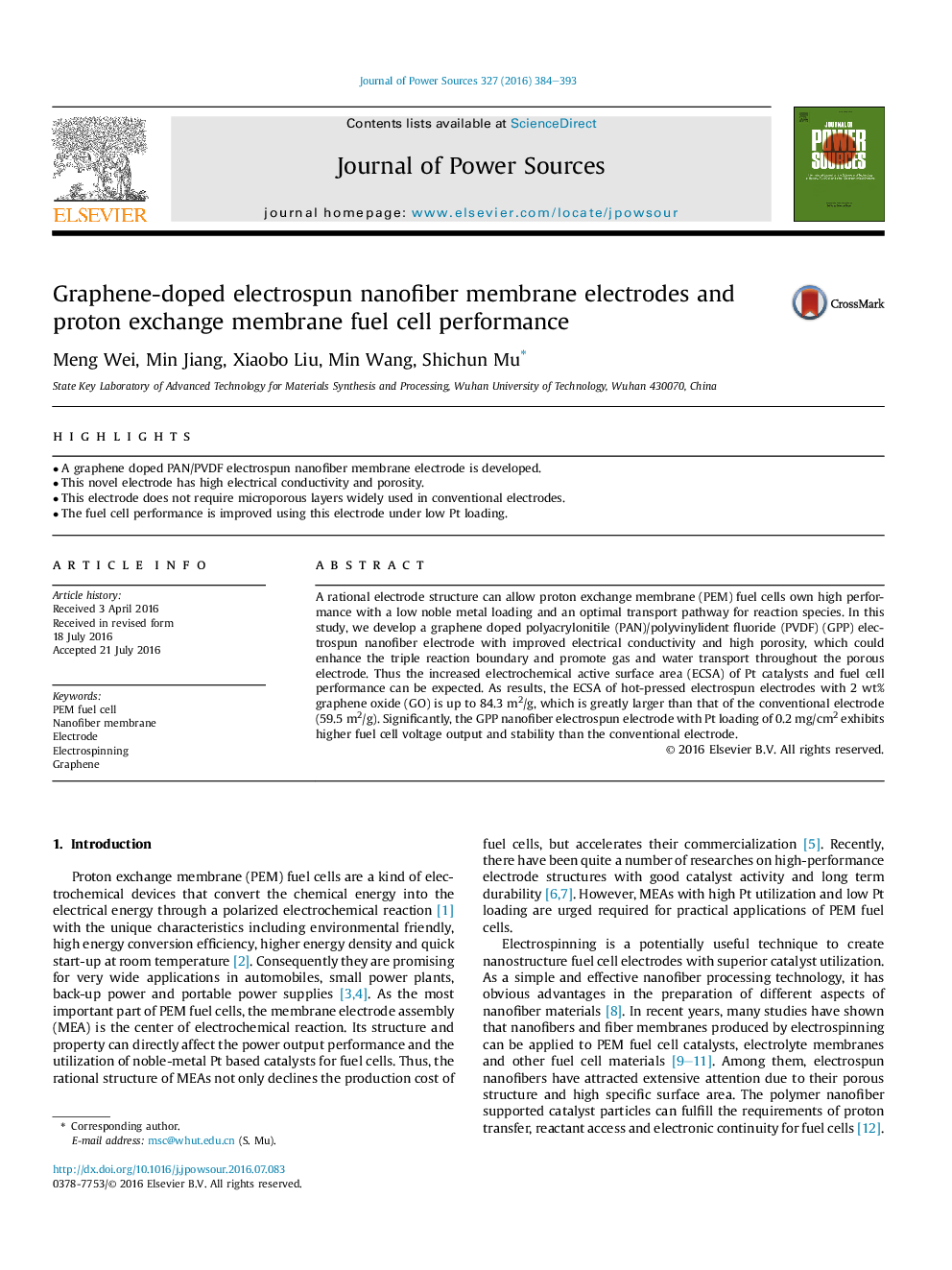| Article ID | Journal | Published Year | Pages | File Type |
|---|---|---|---|---|
| 7727268 | Journal of Power Sources | 2016 | 10 Pages |
Abstract
A rational electrode structure can allow proton exchange membrane (PEM) fuel cells own high performance with a low noble metal loading and an optimal transport pathway for reaction species. In this study, we develop a graphene doped polyacrylonitile (PAN)/polyvinylident fluoride (PVDF) (GPP) electrospun nanofiber electrode with improved electrical conductivity and high porosity, which could enhance the triple reaction boundary and promote gas and water transport throughout the porous electrode. Thus the increased electrochemical active surface area (ECSA) of Pt catalysts and fuel cell performance can be expected. As results, the ECSA of hot-pressed electrospun electrodes with 2Â wt% graphene oxide (GO) is up to 84.3Â m2/g, which is greatly larger than that of the conventional electrode (59.5Â m2/g). Significantly, the GPP nanofiber electrospun electrode with Pt loading of 0.2Â mg/cm2 exhibits higher fuel cell voltage output and stability than the conventional electrode.
Related Topics
Physical Sciences and Engineering
Chemistry
Electrochemistry
Authors
Meng Wei, Min Jiang, Xiaobo Liu, Min Wang, Shichun Mu,
